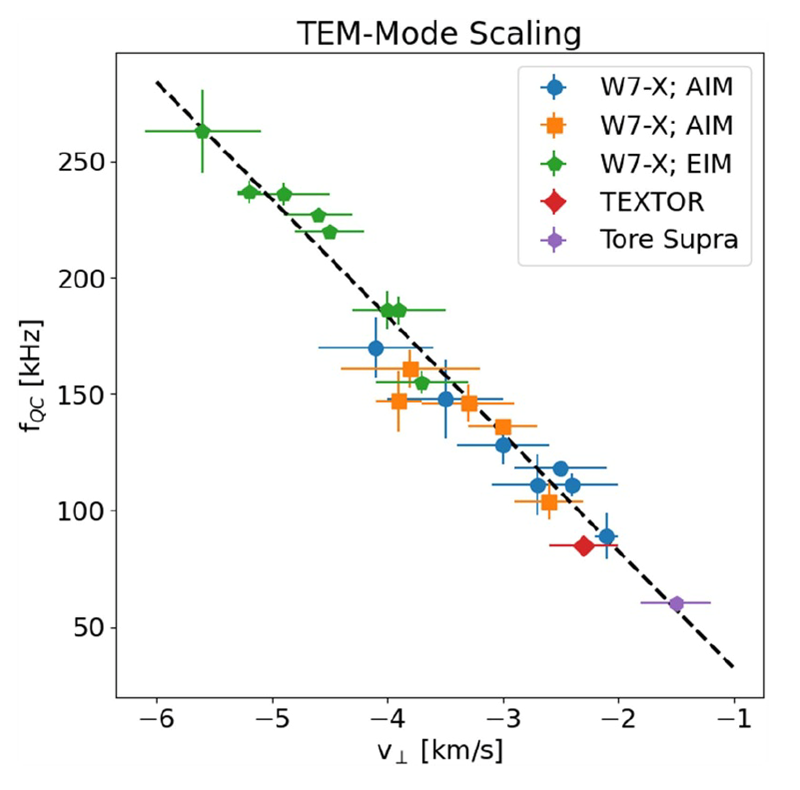[Article] - Observation et caractérisation des modes électrons piégés dans une configuration magnétique complexe tel que W7-X et relation universelle entre fréquence et vitesse de ces modes
In the past, quasi coherent (QC) modes were reported for nearly all tokamaks. The general definition describes modes as QC when the magnitude squared coherence is in the range of 0.3 to 0.6. QC modes are observed in the plasma core as well as in the plasma edge and can have quite different physical origins. The one in the core are observed in plasmas with low collisionality, where the electron temperature exceeds the ion temperature in the plasma core. This is the case for electron cyclotron heating in general. The origin of these modes are electrons trapped within a magnetic mirror, as reported in the past from various fusion devices. The so-called trapped-electron modes (TEMs) belong to drift wave instabilities and can be destabilized by electron-temperature gradients in the plasma core. From the diagnostic point of view, QC modes appear as fluctuations in electron density and temperature. Therefore, the microwave reflectometer is very well suited to monitor these modes. This paper describes experiments, conducted at the Wendelstein 7-X stellarator (W7-X), which aim at detecting QC modes at low wave numbers. A poloidal correlation reflectometer installed at W7-X, is able to measure low wave numbers (k⊥ ⩽ 3.5 cm−1). For medium line-averaged densities (ne ⩽ 6~1019 m−2) the plasma core is accessible for this diagnostic. For different magnetic configurations and plasma parameters, broad QC structures are observed in the coherence spectra. From the analysis of the rotation and the poloidal structure, these QC modes show the properties of electron-temperature-gradient driven TEMs. A linear relation between the mode velocity and the rotation frequency is found. The relation is uniform and confirms the nature of QC-mode observation as TEM in tokamaks, too.
Auteurs
A Krämer-Flecken[1], J H E Proll2, G Weir[2], P Costello[2], G Fuchert[2], J Geiger[2], S Heuraux[3], A Knieps[1], A Langenberg[2], S Vaz Mendes[2], N Pablant[4], E Pasch[2],K Rahbarnia[2], R Sabot[5], L Salazar[3], H M Smith[2], H Thomsen[2], T Windisch[2], H M Xiang[1],[6] and the W7-X-team7
[1] Forschungszentrum Jülich GmbH, IFN-1 - Plasma Physics, D-52425 Jülich, Germany
[2] Max Planck Institut für Plasmaphysik, D-17491 Greifswald, Germany
[3] Institut Jean Lamour, Université de Lorraine, CNRS F-54000 Nancy, France
[4] Princeton Plasma Physics Laboratory, Princeton, NJ 08543-0451, United States of America
[5] CEA, IRFM, F-13108 Saint-Paul-Lez-Durance, France
[6] Shenzhen Institute of Research and Innovation, University of Hong Kong, Shenzhen 518172, People’s
Références
Plasma Phys. Control. Fusion 67 (2025) 025014 (22pp)
DOI
https://doi.org/10.1088/1361-6587/ada0db

